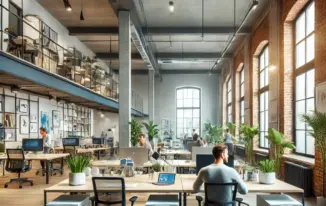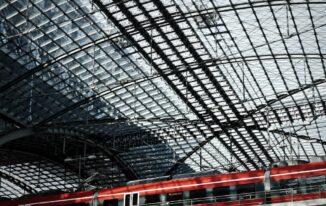Bringing a fresh look and increased functionality to an older office building can breathe new life into your workspace. An office space refresh not just revitalizes the building, but also reinvigorates the employees who occupy it daily. Implementing design changes that align with contemporary trends can lead to improved productivity and morale. Whether you’re dealing with outdated fixtures or a lackluster layout, the potential transformations are boundless. Below are insightful strategies for updating an older office without compromising its unique character.

Revitalizing an Older Office Building: The Balance of Aesthetics and Functionality
Updating an older office building is a delicate blend of preserving the past and embracing the future. It’s essential to maintain the integrity of the original design while introducing modern amenities. The architectural heritage can serve as a distinctive feature, setting your office apart and creating a sense of identity. Consider the textures and patterns inherent in the building’s design and find ways to highlight them tastefully.
Functionality also plays a crucial role in revitalizing an older space. While aesthetics are important, the building must first and foremost be practical for everyday use. Updating HVAC systems, retrofitting with energy-efficient lighting, and ensuring that the layout flows seamlessly are paramount to function. With an eye toward sustainability, consider incorporating eco-friendly materials where possible. When replacements are necessary, like with roofing, choosing rustic yet durable materials such as slate tile roofing can improve longevity to the new roof and add timeless beauty to the building’s exterior.
Incorporating Modern Technology While Preserving Character
The advent of modern technology has changed the way we work, and updating an older office implies integrating such technology thoughtfully. Wi-Fi connectivity, charging stations, and smart technology should be woven into the fabric of the office environment without overwhelming its historic character. Strategies such as hiding wires within furniture or through discreet floor and wall channels can maintain a clean aesthetic.
For security purposes, modernizing an old office building often requires the integration of advanced security measures. To protect your assets and ensure employee safety, consider implementing burglar and perimeter alarm systems as well as motion sensors designed to be unobtrusive but highly effective. Such alarm systems can offer peace of mind while preserving the building’s original charm.
Investing in collaborative technologies, like smart boards and video conferencing tools, supports a dynamic working environment. These tools should blend into existing design elements and enhance meeting rooms without dominating them. Retrofits that respect the building’s heritage, such as using antique-style light switches with modern functionality, can add a special touch.
Harnessing Natural Light for a Brighter, More Productive Environment
Natural light is one of the most sought-after features in modern work environments. It not only reduces the reliance on artificial lighting, leading to energy savings, but also promotes employee well-being. Assess the current window placements and consider enlarging them or cleaning and restoring existing fixtures to maximize the daylight that permeates the space.
In spaces where windows are limited, creative solutions like light wells or skylights can introduce more sunlight. Using reflective materials and light colors in the decor can also help bounce light around the room, making the most of what natural light is available. Be wary of glare, however, and incorporate adjustable shades or blinds for comfort.
Strategy for Space: Redesigning for Efficiency and Collaboration
A well-planned layout is fundamental to an efficient and harmonious workplace. Start by analyzing your current space—identify underutilized areas and consider how they might be repurposed. Think about how teams interact and move through the office, aiming to streamline these flows to reduce wasted time and motion.
Facilitating collaboration is another key goal in the modern office landscape. Creating flexible, multi-purpose spaces encourages spontaneous meetings and brainstorming sessions. Consider foldable walls, movable furniture, and designated lounge areas that invite interaction and offer a change of scenery throughout the workday.
However, collaboration doesn’t mean the elimination of private spaces. Balancing open-concept designs with personal work zones is necessary to accommodate different work styles and tasks that require concentration. Providing a variety of work environments within the office can cater to individual employee needs and lead to higher productivity levels.
Overall, refreshing an older office building presents a unique opportunity to meld historical charm with modern workday necessities. A thoughtful approach to aesthetics, functionality, technology, and sustainability can result in a workspace that is as efficient as it is inspiring.



